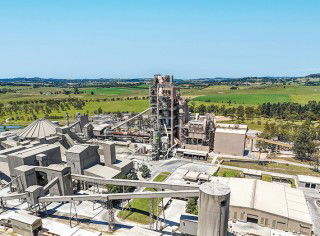Researchers at the University of Columbia, New York, USA, have developed a cement that uses magnesium hydroxide harvested from seawater instead of magnesium oxide, potentially removing more carbon than it releases during its production. According to a report in Chemistry World, although reactive magnesium oxide cements as a low-carbon alternative have been explored over recent years, these cements are typically derived from the carbon-containing mineral magnesite, which is not widely available and releases carbon dioxide during the calcination process to obtain magnesium oxide.
This new magnesium-based cement produced using seawater has the potential to soak up carbon rather than emitting it like conventional cement. Although its properties make it unsuitable for reinforced concrete, it could be used in non-reinforced materials, such as concrete blocks, which currently account for around 15 per cent of all concrete applications, according to the report. The production process involves membrane-less electrolysers developed by Esposito’s lab at the University of Columbia to produce an acidic and an alkaline stream when seawater passes through them. This enables precise control of the pH, allowing magnesium hydroxide to precipitate out. According to the research team, this can then be used to manufacture a cement that soaks up carbon dioxide during the curing process, producing solid carbonates that strengthen over time.
However, although seawater is a carbon-free raw material, the concentration of magnesium within it is very low so huge volumes would need to be processed, which would be costly, points out Karen Scrivener, materials chemist at the Swiss Federal Institute of Technology. “Also, these potential materials have completely different chemistries from Portland cement so it would take a few decades at best to get industry standards even if you can solve the other problems,” she adds.
While the research team acknowledges the challenges facing the process, they remain optimistic. “Industrial-scale desalination plants, electrochemical reactors and carbonation-cured concrete production facilities are already in operation today. Integrated facilities with similar sizes would be required to produce magnesium cements from seawater based on our process,” says Shiho Kawashima, associate professor of civil engineering and engineering mechanics at University of Columbia.
